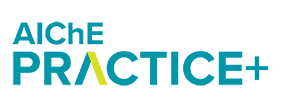
One of the most important activities that a chemical engineer participates in is the evaluation of the safety of a process system. What can go wrong? How bad would it be? What can be done to prevent the event from happening?
This presentation outlines several commonly used process safety review techniques used to answer these questions. The presentation includes Hazards and Operability Analysis(HAZOP), 'What Ifs', and Checklists. The presentation also presents an overview of more advanced techniques such as Layer of Protection Analysis (LOPA), and Consequence Analysis.
Presenter
Webinar content is available with the kind permission of the author(s) solely for the purpose of furthering AIChE’s mission to educate, inform and improve the practice of professional chemical engineering. The content reflects the views, opinions, and recommendations of the presenters. AIChE does not warrant or represent, expressly or by implication, the correctness or accuracy of the content of the information presented. All other uses are forbidden without the express consent of the author(s). For permission to re-use, please contact chemepermissions@aiche.org. Attendee contact information, including email addresses, will be shared with AIChE, with the option to unsubscribe from future communications.


